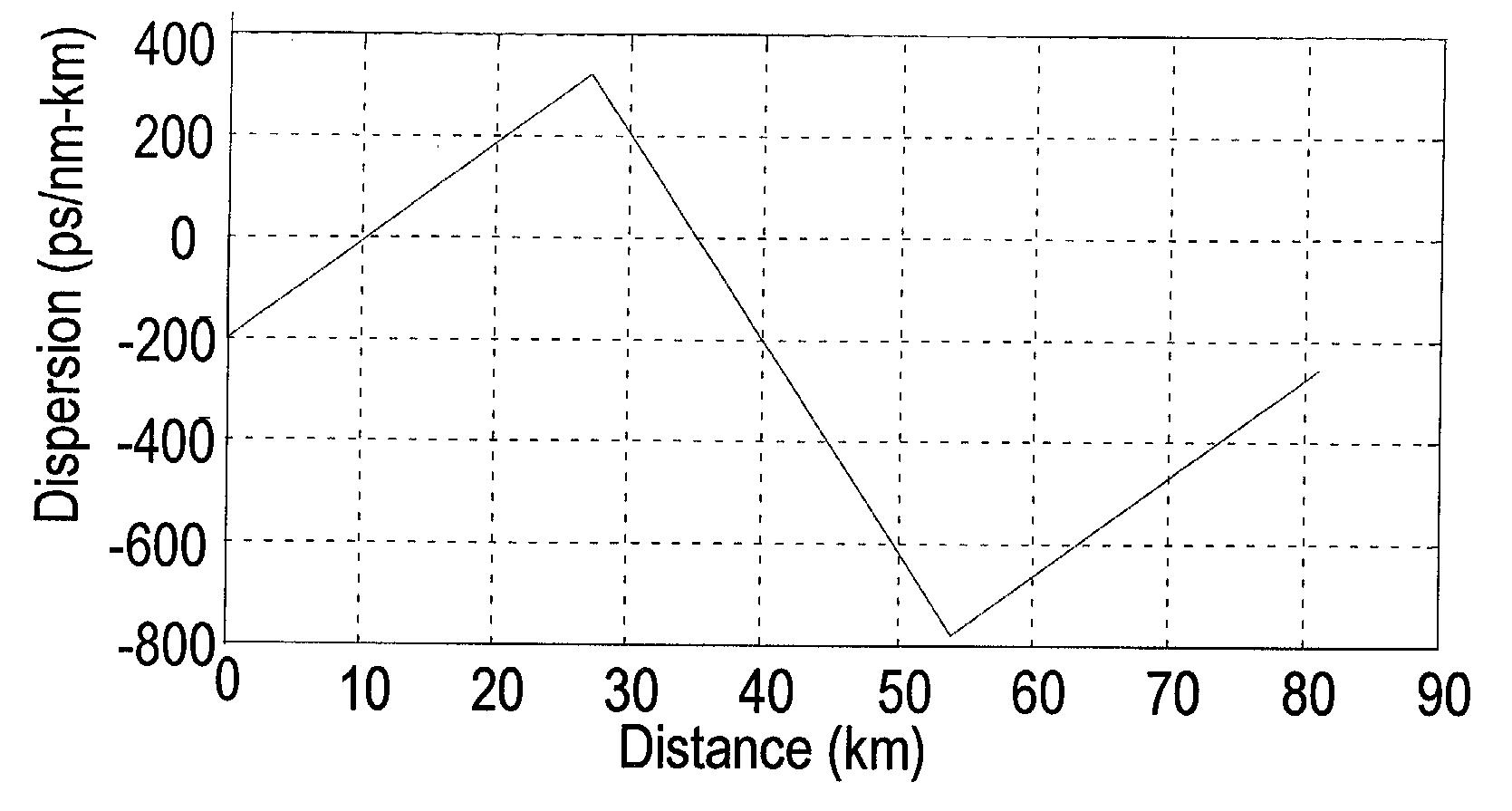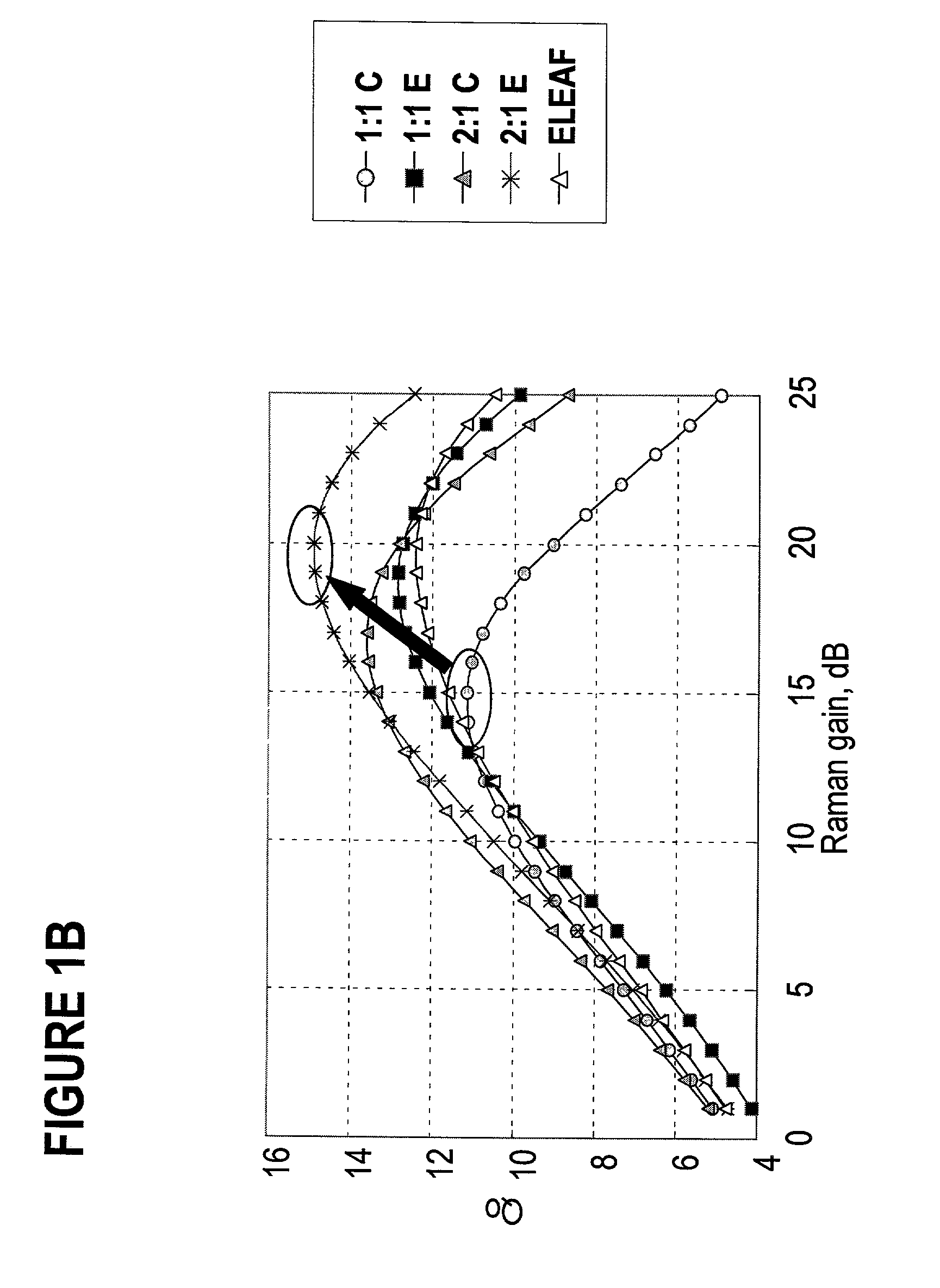Dispersion management for long-haul high-speed optical networks
a high-speed optical network and long-haul technology, applied in the field of optical transport networks, can solve the problems of adversely affecting the industry's ability to meet demand, single-mode fiber is more difficult to splice and connect light into, and chromatic dispersion and fiber nonlinearities present significant obstacles to achieving higher system data rates and longer transmission distances (reach), so as to improve performance and improve propagation, the effect of increasing the demand for more services
- Summary
- Abstract
- Description
- Claims
- Application Information
AI Technical Summary
Benefits of technology
Problems solved by technology
Method used
Image
Examples
Embodiment Construction
[0050]The aim of undertaking dispersion management in the outside plant is to emulate the attributes of a theoretical “perfect” fiber, which would have ideally low attenuation, near zero dispersion slope, finite local dispersion with defined near zero average value, low non-linearity medium in high power region and high Raman Figure of merit in low power region (to enable low noise Raman preamplification), and good cable performance.
[0051]It is possible to construct dispersion managed systems by incorporating lengths of fiber with opposite dispersion and dispersion slope into the cable, and coupling (e.g., splicing) the fibers in correct sequences.
[0052]FIG. 1 illustrates various configurations C1–C6 for dispersion managed cables according to the invention, for a bidirectional communication system. Each variant comprises two mirror cables denoted with C1′, C1″; . . . ; C6′, C6″ running along each other, each for a direction of transmission. In this figure, fiber 5 is SMF with negati...
PUM
 Login to View More
Login to View More Abstract
Description
Claims
Application Information
 Login to View More
Login to View More - R&D
- Intellectual Property
- Life Sciences
- Materials
- Tech Scout
- Unparalleled Data Quality
- Higher Quality Content
- 60% Fewer Hallucinations
Browse by: Latest US Patents, China's latest patents, Technical Efficacy Thesaurus, Application Domain, Technology Topic, Popular Technical Reports.
© 2025 PatSnap. All rights reserved.Legal|Privacy policy|Modern Slavery Act Transparency Statement|Sitemap|About US| Contact US: help@patsnap.com



